Stephen Birchard's Blog, page 2
August 17, 2021
Mockingbird: Midnight Crooner
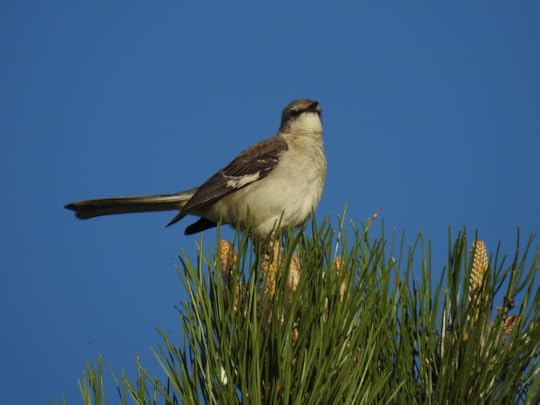
Bird (def) : a warm-blooded egg-laying vertebrate that has feathers, wings, and a beak and usually is able to fly.
Mocking (def): usually used in a negative way; ridicule, deride, jeer at, sneer at, unkind
I think most people would NOT think of a mockingbird in this negative manner. More likely we would have a more positive outlook and would describe the mockingbird as friendly, playful, full of good vibes, humorous, and melodious.
Further evidence of the mockingbird’s favorable reputation are these two quotes from a very popular book “TO KILL A MOCKINGBIRD”. (Harper Lee, Author, 1960) Atticus to Jem: “shoot all the bluejays you want if you can hit them but remember it’s a sin to kill a mockingbird.” In another passage, Miss Maudie states “ mockingbirds don’t do one thing but make music for us to enjoy. They don’t eat up people’s gardens, don’t nest in corncribs, they don’t do one thing but sing their hearts out for us. That’s why it's a sin to kill a mockingbird.”
Now for a few features of a mockingbird known to learn many songs that are repeated by said bird! The latin for mockingbird is very descriptive- mimus polyglottos. Polyglottos is a Greek word that means “multiple languages”. Aptly named I’d say. The northern mockingbird is the one found in North America. Others include the Socoros, Bahama, Blue and Tropical.
This bird is a medium-sized gray bird with a white neck area; the wings have two white stripes and large white patches seen at rest along the lower border of the wings. The white patches really stand out when the bird is flying and are seen as “bars” running forward and backward along extended wings. The bill has a slight downward curvature of medium length and is brown/black in color. It is an omnivore and has a diet of worms, fruit, and some small amphibians and reptiles. Mostly they subsist on insects.
In my experience, they do most of their singing from atop a structure such as an electric pole or tree as seen there two photos (figures 1 and 2)

The mockingbird is considered a New World Passerine from the family Mimidae. They are best known for micmicking songs of other birds and even the sounds of insects and amphibians (frogs). These songs are often very loud and repeated in rapid succession. It is not unusual to be singing late at night, even past midnight. A “midnight” crooner if you will. I distinctly remember a late evening in Missouri many years ago when I left the house of one of my lady friends after breaking up with her following a squabble. As I was walking to my car around 12:30 AM I heard this very melodious happy sound coming from atop an electric pole and sure enough it was the “midnight crooner!” I was downtrodden and sad so this did not fit my mood and I finally got it to stop after I threw a pebble in its direction. Much to my chagrin, it flew to the top of a tree out of my throwing arm range and starting serenading me again!
Northern mockingbirds can make up to 200 different calls; females are attracted mostly to males that make the most different sounds although females can also be talented enough to sing muliptle songs. The bachelor males make more songs than the mated ones. Throughout their lifetime they continue to always be learning new songs. The songs are usually a long series of phrases with each one repeated 2-8 times before changing to a new song. Most of their songs are “whistled” but they can also make other sounds like scolds, trills, or rasps. Thrashers have a similar sound but the phrases are limited with their variation and most are repeated only 2 or 3 times. Gray catbirds have similar sounds but their phrases are more hurried, slurred, and nasal.
The mockingbird is very territorial and can survive in multiple habitats. Lead in their environment can make them more territorial and aggressive. (Stephanie McClellan, published in Science of the Total Environment). The lifespan of the mockingbird in the wild can be up to 8 years; when captive, up to 20 years.
To enjoy a number of northern mockingbird sounds go to Cornell Lab of Ornithology site www.allaboutbirds.org and search for “mocking bird sounds”. Enjoy being serenaded by the "midnight crooner"!
June 15, 2021
Sing On, Cicadas!
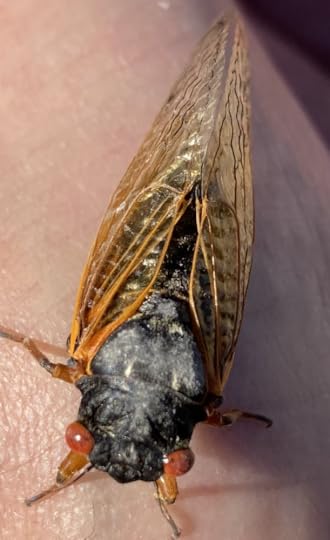
First the sound is distant, a faint buzzing coming from the trees. As we drive closer to the source of the strange noise, it is louder, more distinct. It undulates, the high-pitched buzzing first soft, then gradually building, then retreating. When we get closer, the cacophony is deafening. It is impossible to hear anything but the persistent raucous sound; the desperate racket of thousands who desire the company of the opposite sex so their species can continue.
These are the insects who have now completed their journey from egg to nymph to adult. This is not an unusual sequence of events in the insect world. Butterflies undergo an even more complicated process of egg to caterpillar to pupa to winged adult, also known as complete metamorphosis. What makes these noisy insects spectacular is the time frame. As immature creatures they bury themselves in the soil and patiently live there. Then, 17 years later, the adults emerge.
This is Brood X of cicadas. For 17 years they have waited underground, feeding on the roots of plants and trees. Even though there are millions of them, the cicada nymphs cause little to no damage to the fauna that supports them. This is the usual relationship between organisms in nature; balance is maintained by not overwhelming the system that supports the species. Humans could learn a valuable lesson from these insects; be patient and live in harmony with the environment.
After their extended period underground, the adult winged cicadas mate and then die after a few weeks. Their purpose completed, they are absorbed back into the ground as organic fertilizer and part of the biomass that makes up the soil. This short adult life span is common in the insect world. Many aquatic insects live only a few hours after hatching to adulthood. This abbreviated life span as an adult seems very odd until one understands that everything about the insect life cycle is geared toward survival of the species.
Currently in Central Indiana the 17-year cicadas are everywhere. To get close to them just find some trees and follow the unmistakable sound of the males. They fly between the trees, but some exit the forest and are seen hitting cars, windows of shops, and landing on anything vertical, including your body. I like it when this happens; I can get a closer look at them.
https://video.wixstatic.com/video/e6482d_6ea1581a5c3d46949087edcb9e4798fb/1080p/mp4/file.mp4Our response to this insect invasion of our daily lives reflects our attitude about nature. Even though they don’t bite, harm the environment, or transmit disease, do we find them annoying, irritating, and ugly? Or do we tolerate, even enjoy their temporary presence and patiently wait until they gradually die off? I choose the latter. After all, it took them 17 years to get here; the least we can do is graciously share the forests with them for a few weeks.
To be honest, I am fascinated with them. I see beauty in their red eyes, large wings, and fat bodies. I even love their sound. The music they create cannot be compared to a Beethoven symphony, but it is beautiful none the less. It is the music of nature; the combined voices of a million members of a species who just want to make their presence known for a little while. I celebrate their visit as a wondrous part of nature. They are not cute and cuddly like a bunny rabbit, or majestic like a bald eagle, but they are remarkable, and I feel privileged to be close to them.
So sing on cicadas!
We’ll add our voices to your choir,
And dance to your song.
We’ll learn lessons from your journey,
As we marvel in your throng.
Your patience is a virtue,
That we appreciate.
Until we meet again,
2038.
References
Brood X Periodical Cicadas FAQ. https://www.nps.gov/articles/000/cicadas-brood-x.htm
May 20, 2021
Nature Quiz
True or False:
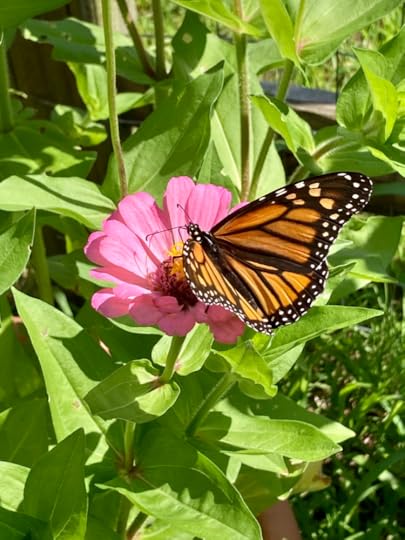
1. Every winter Eastern Monarch butterflies migrate to Costa Rica.

2. When different species of animals benefit each other, it is called mutualism.
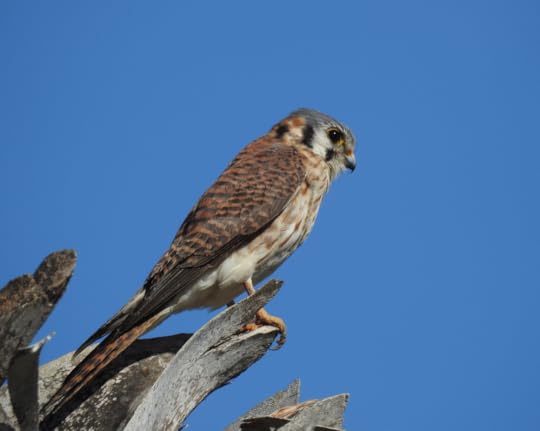
3. The American Kestral is also called a sparrow hawk.

4. Former Vice President Al Gore is responsible for starting the annual celebration of nature called “Earth Day”.

5. The rain forests of the tropics are also called the “Boreal Forest”.

6. Dogs can detect the smell of 1 teaspoon of sugar in one million gallons of water.
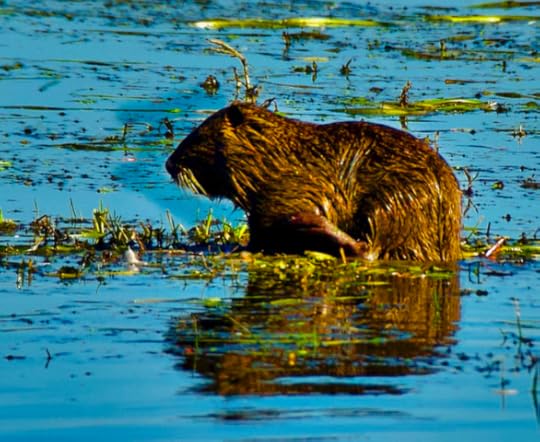
7. Nutria is an invasive species of rodent that has become common in US marshes and wetlands.
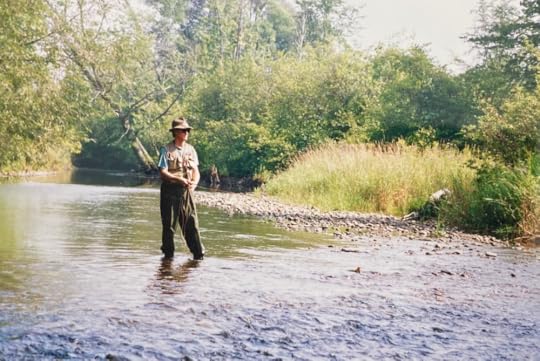
8. The Orvis Company, famous for fly fishing equipment and other amenities, is headquartered on the McKensie River in Vermont.

9. Biologist Rachel Carson changed the world with her best-selling book, Silent Spring.
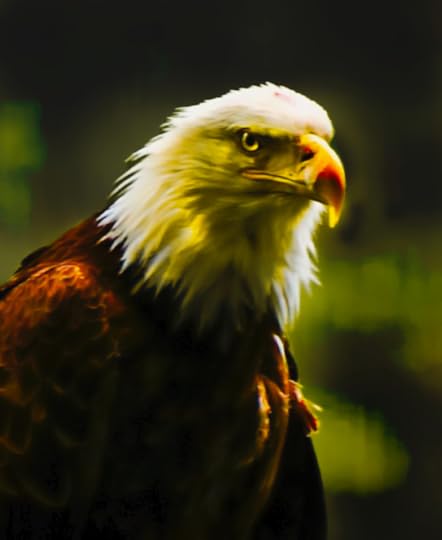
10. The insecticide DDT almost caused extinction of the bald eagle by softening the bird’s eggshells.
Answers:
1. F (they migrate to Mexico)
2. T
3. T
4. F (It was Senator Gaylord Nelson)
5. F (The Boreal Forest is in the Northern Hemisphere)
6. T
7. T
8. F (Orvis is located on the Battenkill River)
9. T
10. T
April 22, 2021
Happy Earth Day 2021!

Twenty million people in the United States celebrated the first Earth Day, April 22, 1970, with demonstrations in cities and “teach-ins” on college campuses. Earth Day was begun to increase awareness of the environment and the effects of air and water pollution and other dangers to the earth’s ecology. Senator Gaylord Nelson from Wisconsin organized the first Earth Day and thus is credited with the birth of environmental activism. Besides other efforts Nelson supported attempts to limit population growth because of its impact on the earth and felt that environment protection should take precedence over economic development.
Earth Day has been held annually on April 22 and offers a chance for all of us to show our support for the natural world. Whether it be discussing environmental issues with friends and family, taking a hike in the woods, starting an organic garden, donating to organizations like the Nature Conservancy (,nature.org), or just recycling a plastic bottle, we can all do our part to protect and preserve this planet we call home. Let’s make it clear that, like ,Rachel Carson, we won’t allow a “Silent Spring”, like the ,Lorax, we “stand for the trees”, and like Senator Nelson, we will celebrate Earth Day by demonstrating our commitment to preserve nature.
The Nature Lovers Digest team is posting this collection of nature photographs taken by one of our own, Dr. Marvin Olmstead, to honor the spirit of Earth Day. As you look at these stunning images, pause for a moment and reflect on your own experience with nature and how it enriches your life. Thank you for your support of our website, and of the earth.



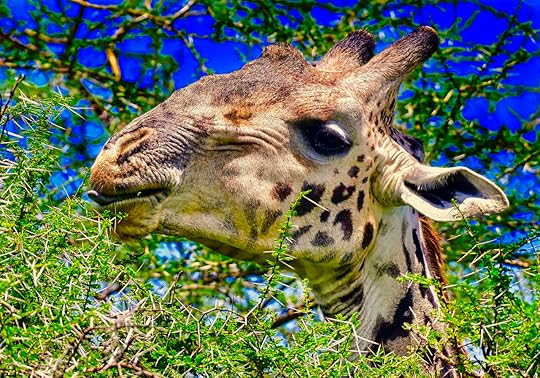




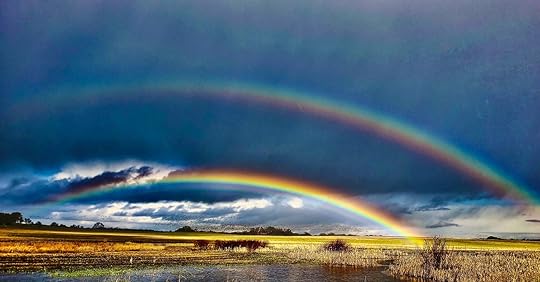
From top to bottom in the photo gallery:
Rufous hummingbird Gold Beach, Oregon
Painted Hills National Park, Oregon
Fog lifting off the Oregon coast north of Florence, Oregon
Giraffe in Serengeti National Park, Tanzania
Leopard in Serengeti National Park, Tanzania
Shore Acres State Park, Coos Bay, Oregon
Upper McKenzie River above Cougar Reservoir
Storm clouds over Mt. Washington, Willamette National Forest
William L. Finley National Wildlife Refuge, Benton County, Oregon
April 13, 2021
Name a Bird That Exemplifies Onomatopoeia: Hint - its initials are WPW
Some words in the English language fascinate me. I have my favorites based on the sound and texture these words create when you utter them. Some are quirky (like “sphincter”), some are cool sounding (like “smidgeon” and “perpetuity”) and others are favorites because of their flowing and smooth characteristics : “onomatopoeia”. C’mon now, you know you like it (in spite of your difficulty spelling it), especially when you say it again and again. This is a good segue to describing briefly some of my favorite onomatopoeic words. A starter word is “buzz” maybe because we have a lot of “buzzing” around our ranch with the female bees in hot pursuit of pollen and honey. Another one is self-induced when I finish my cereal every morning: this one is a beauty for me……..”slurp”! It may be the most closely aligned word to fulfill the criterion of being onomatopoeic! Some others include the “boom” of fireworks, the “vroom” of a car engine, and the “hiss” of a snake! Since this is a nature blog about birds let’s list some bird-related words like “cuckoo” and “chickadee.” But the bird word in this category I wish to write about is the “whip-poor will”. This is a bird that I have had a love-hate relationship for years, but mostly love now.
The “hate” part began when I was a youngster living in the country on a small farm in southeastern Ohio. The front 3 acres of the property had a yard large enough to shag flyballs, a basketball court at the beginning of our driveway, and way too much grass for me to mow when it was my turn! However, the back 2 acres was a beautiful example of nature including a hill with a great deal of declivity down to a creek and filled with all kinds of deciduous and coniferous trees. Black raspberry plants and morrell mushrooms were a lovely bonus alongside the creek bed!
We all know how important sleep is when traveling through puberty! However, when you are sleeping in a double bed with your older brother in June, July, and August and air conditioning is a thing of the future, a good night’s sleep becomes a challenge. Southeastern Ohio’s heat in the summer can be oppressive especially when the humidity is sky high, and you have to sleep with the windows open to get air circulation. Tossing and turning was the norm with sleep wedged in between! Enter the whip-poor-will.
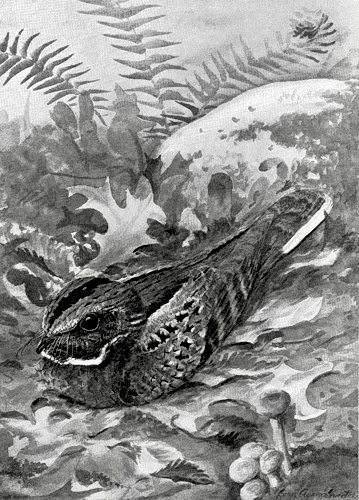
A short whip-poor-will profile is in order. This species is mostly an eastern bird with a Mexican whip-poor-will at one time thought to be the same species. Its range is mostly east of the Mississippi River and extends into Mexico. This bird is considered one of 9 nightjars all of which are active at night (to my pubertal chagrin)! They nest on the ground and often sit on a branch waiting for an insect to come by and be swallowed. They are solitary and their coloration is ideal camouflage for their environment. They are part of group of nightjars and hawks known collectively as goatsuckers. They were erroneously thought to enter barns at night and suckle on goats. (Sibley)
Besides foraging at night, they also sing their lovely, (or, not so lovely), lullaby. (Hear the whip-poor-will call from the Cornell Ornithology Lab by clicking here.) “Not-so-lovely” was the case in my youth. This sound, although beautiful to me today, was NOT so adorable when it was repetitive and lasted through the night and well into the wee hours of the morning! Combine the repetitive song with heat, humidity, sweating like a hog, and sleeping with a big “lug” of a brother taking his half of the bed out of the middle, the result was a “perfect storm” for insomnia. As a result, the next day I was greatly annoyed and cranky! I think my serious attempt at cussing began in the wee hours of those summer mornings. The whip-poor-will “song” was insufferable and seemed to last forever! My kingdom for a good pair of ear plugs!
I have been away from the Midwest for over 6 decades and oh how I now yearn for the lovely sound of the whip-poor-will! I would welcome it anytime of the evening or early hours of the morning since my older age has rendered me somewhat of an insomniac! Repetition would be a blessing now! Absence DOES indeed make the heart grow fonder.
About 2 years ago I had a delightful and joyful experience with one of the whip-poor-will’s cousins. My wife and I were having dinner on the deck of some dear friends where we live in Colorado. Darkness had just set in, and it was quiet and peaceful. Suddenly, without warning I heard a whip-poor-will with an absence of the “whip”. Oh my goodness….my very first time hearing a common poor-will! A ‘lifer’! Suddenly my bad memories of its relative, the whip-poor-will, transformed into sweet memories of my childhood and this bird’s sounds coming from the woods below my house.
Because of their nocturnal nature, getting photographs was impossible for me so refer to your favorite bird ID book! You will notice a lot of morphometric similarities between the birds in this nightjar category.
References
Sibley, David Allen: The Sibley Field Guide to Birds of Western North America Copyright 2003 by Chanticleer Press, Inc.
All About Birds, Cornell Ornithology Lab, https://www.allaboutbirds.org/guide/E...
April 8, 2021
Dog or Cat Person: Which one are you?

If I were to collapse suddenly and be found dead on the street, someone looking for a form of identification on my body would likely find a pant pocket stuffed with dog treats. This person might be surprised to learn later that I don’t even have a dog.
I have always loved dogs, having grown up with two wonderful “mixed” breed males who slept at the foot of my bed. But right now, Linda and I are pet-less, so I have to get my dog fix from those I meet in the neighborhood or on our long rambling walks. Over the past year, I have become popular and am typically greeted by dogs with much more enthusiasm that I elicit from my grandchildren. Just the sound of the zipper opening on my cargo pants brings these canines to rapt attention, sometimes with their cold noses pressed against my pocket.
I guess you could say I am a “dog person.” I have found over the years that people tend to fall into two distinct groups: Dog People or Cat People. Ask anyone where they are on this issue and you’re likely to get a quick, definitive answer. Mostly, I’ve learned, this preference has to do with what kind of animal they grew up with. If they had a cat when they were little, they just love cats!
That said, these days I find myself to be an anomaly. I love both dogs and cats. Cats came into my life when my daughter, about five at the time and not long after we lost our beloved Springer Spaniel, expressed an interest in having a cat. My mother-in-law, Marge, jumped to the task, finding a breeder and taking me along for the ride when she went to choose the perfect feline.
Snuggles, as my daughter named her, was a Himalayan, a breed that I didn’t quite “get” at the time. At first, her flat face seemed very odd to me. Weren’t cats supposed to have pointy snouts? But in time, I got used to the look. Snuggles became a much-loved member of our family and, true to her name, she submitted to much snuggling, curling up in our laps as we watched TV and burrowing under the pillows in our bed. She was so docile and trusting that I could stretch her out on her back over the entire length of my arm and she didn’t make a move. Over time, as often happens with any pet, her name evolved: Snuggles became Snuggy, then Snugglebuggle, then Buggy and eventually just “Bug.”
In time, of course, we got another cat – hey, if one cat is good, two are even better, right? Missy was also a Himalayan, pure white and although friendly, not quite as snuggly as Snuggles. She was more aloof and would disappear into different parts of the house without warning, resulting in our having to look under beds and into closets to make sure she had not gotten out of the house. And we didn’t dare to try to turn her upside down.
That was years ago. My daughter, now grown with children of her own, seemed to transition back into a dog person, mostly, I suspect, because her husband is allergic to cat dander. Her family is now on its second dog, Zoey, who goes crazy when I pull up out front. I would like to think she just loves me, but I know that a pocket full of dog treats might have something to do with her rousing reception.
Once you have learned to love cats, I believe, you can never go back. On walks with Linda, I love coming upon cats sitting on the porch of a home or just milling around in the front yard. Mostly they will not come to me, for which I can’t blame them – who the heck is this guy? – but occasionally one will saunter over and rub against my leg and submit to a quick head scratch. And that’s without getting a treat of some kind. Take note, neighborhood dogs!
Some years ago, I was taking a short walk around the block on a cool autumn night when I spied a cat walking toward me, the light from the street lamp reflecting in its eyes. To my surprise, when I called to him, he hustled toward me and threaded his body between my legs. He looked cold and thin and hungry. I remembered, with delight, that I happened to have a can of tuna in my coat pocket. (I was on the Atkins diet and always carried some protein with me, just in case.) Sitting down next to this unfamiliar cat on the curb and using the light from my iPhone, I popped off the pull-tab lid and laid the feast before him. My new feline friend devoured the contents, purring like a V-8 engine. As he was finishing up, a car approached, slowing to a crawl and then a stop. As the driver’s window lowered, I could see that the occupants were my friend and his wife. “Look, honey,” John called out. “It’s the Cat Whisperer.” We have had many a laugh about that.
My mother, Carolyn, had always been a Dog Person. She had grown up with hunting dogs in Southern Georgia (they slept outside), and had lived with three dogs – Bullets, Rebel, and Yankee – over the years in our home in Pennsauken. When my father died, in 1993, she continued to live in the house alone for almost 25 years. For a while, she enjoyed the company of a fourth dog, Charlie (also my father’s name), when her grandson was no longer able to take care of him. He was a big, friendly Golden Retriever, who would not leave her side, lending much comfort to her in her old age.
By the time she reached her nineties, Charlie, too, was gone and she was very lonely in the old house by herself. But then something amazing happened: she became a Cat Person.
A feral cat, whom she named “Stripey,” took up residence in the neighborhood. We could easily recognize her, as she limped and was polydactyl, with six toes
on her front paws. When Stripey had a litter of kittens under a bush on the side yard, my sister Barbara found good homes for all of them and had Stripey examined and spayed by a local veterinarian. Stripey continued to hang around, arriving each morning and each evening at the front door, waiting to be fed. “Is that darned cat here again?” my mother would say. “I just fed you! Oh, all right, give me a minute.”
Though she was almost blind by then, my mother would make her way to the kitchen to prepare a meal for Stripey. Sometimes it was store-bought food, but often she would heat up some leftover chicken for her as a special treat. Mom liked to complain about Stripey, but we all recognized that it was the highlight of her day to kneel down at the front door to slip the food bowl out onto the front porch and, if she was lucky, get to run a hand across Stripey’s back before she backed away. This went on for years.
When my mother passed away, my sister and I worried about what would become of Stripey. We sold the house to a “flipper,” named Nelson, and we talked him into feeding the cat every day while renovations were taking place. We dropped off bags of cat food on the front porch every few weeks.
When the house was finished, Nelson sold it to a Hispanic couple, Raphael and Veronica. I got up my courage and knocked on the door. Veronica invited me in and I told her about Stripey. Though she did not speak much English, she got the gist of the story and promised that she would continue to feed her. Barb and I continued to take food over, but eventually she told me that wasn’t necessary; she (and her granddaughter) considered Stripey to be part of the family.
This past winter – a good four years after my mother’s passing – I got a text message from Veronica. “I take care of her!” it said. Included in the text were two photos of Stripey enjoying a bowl of cat food, nestled in the “igloo” which my sister’s husband Ray had put in the backyard to keep Stripey safe and warm.
It seems, to Stripey’s good fortune, that Veronica was a Cat Person.



